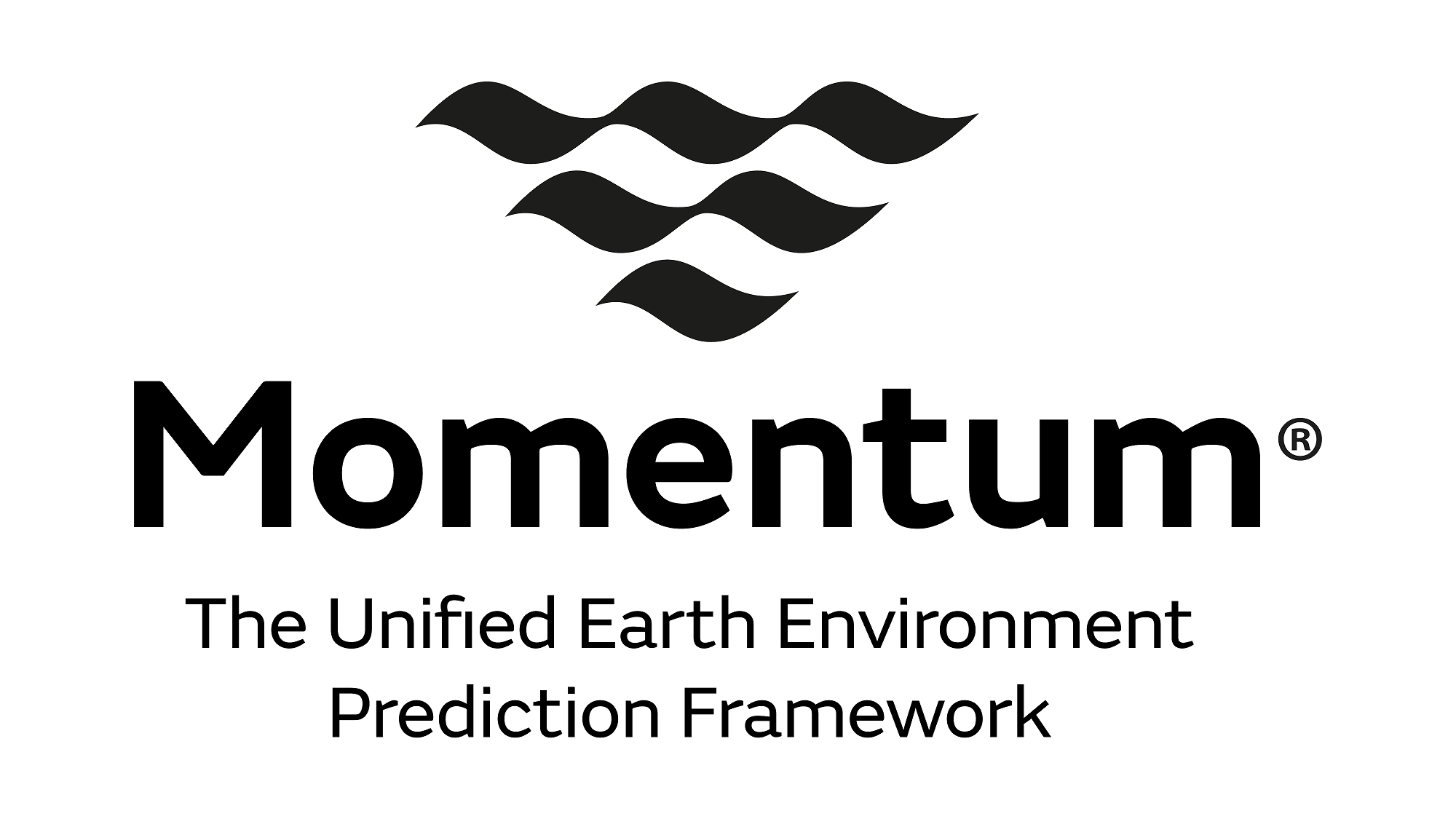Momentum
The Unified Earth Environment Prediction Framework
Momentum® is a software framework for modelling Earth’s environment, developed and used by the Momentum Partnership. The framework includes rigorously evaluated Science Configurations, which define how to configure components of the framework to build prediction and projection systems, both regional and global.
Momentum follows a seamless modelling approach, using the same model components across temporal and spatial scales, similar to the Unified Model. The framework includes model components for the atmosphere, land surface, ocean, sea-ice, and other parts of the Earth system. It contains software for data assimilation, verification, and technical tasks like workflow management.
Shared Momentum workflows are available to collaborate on the development of components and the supported Science Configurations. Prediction and projection systems implemented with Momentum are given distinct names by different partners to distinguish between systems configured and deployed by them. For example, the Met Office's ensemble system for producing global weather forecasts is called MOGREPS-G, regardless of the details of its Science Configuration.
 Momentum is the name for the software components and configurations to build prediction systems with The Unified Earth Environment Prediction Framework. It does not describe the input data needed to run such applications.
Momentum is the name for the software components and configurations to build prediction systems with The Unified Earth Environment Prediction Framework. It does not describe the input data needed to run such applications.
Key components of Momentum
A significant portion of Momentum's code has been developed by the Met Office and other Momentum Partners, including Research Partners. However, some key components of Momentum are developed by wider consortia, and not owned by the Met Office or the Momentum Partnership. For example, components for ocean modelling, data assimilation, and verification have their own distinct development communities. This multi-community approach allows collaboration with more partners and provides a modular framework.
The Momentum Framework is evolving dynamically with time to meet the modelling requirements of its user community. As a result, components may change in the future. Examples for currently important components of Momentum are:
Scientific Software
- Atmosphere model: LFRic – Atmosphere
- Land surface model: Joint UK Land Environment Simulator (JULES)
- Ocean model: NEMO Ocean Engine
- Sea-ice model: NEMO Sea Ice Engine (SI3)
- Sea ecosystem model: ERSEM
- Marine biogeochemistry model: MEDUSA
- Chemistry and aerosols model: UKCA
- Observation processing software: JEDI-based Observation Processing Application (JOPA)
- Data assimilation software: JEDI Application for Data Assimilation (JADA)
- Verification software: Model Evaluation Tools (METplus)
Technical Software
- LFRic – Infrastructure
- Domain specific compiler: PSyclone
- Model coupler: OASIS
- Data assimilation: JEDI
- Workflow engine: Cylc
- Configuration management software: Rose
Legacy software components from the Unified Model software ecosystem are being incrementally phased out of Momentum workflows. The full transition to Momentum for climate applications is expected to be completed in the early 2030s.
Science Configurations and development approach
Science Configurations are rigorously tested and define the exact setup for the individual model components. These configurations are distinguished between regional and global configurations. Additionally, there are coupled Science Configurations which detail multi-model setups, e.g. an atmosphere – ocean model.
The development approach of Momentum uniquely separates the development of components, Science Configurations, and systems. Each has its own release cycle, but they build on each other. The naming and numbering convention for Momentum Science Configurations is a continuation from the Unified Model software ecosystem to reflect the gradual introduction of the framework into research and operations. The Global Coupled Science Configuration GC6 and the Regional Atmosphere and Land configuration RAL4 will both use the LFRic Atmosphere model and mark the first Science Configurations built with Momentum.
Scientific and technical components are reusable outside the framework. However, the components of the Momentum Framework are the software packages needed to implement systems with Momentum Science Configurations. This defines the Momentum Framework’s scope and keeps the Partnership focused on shared components and systems.


